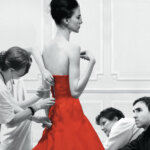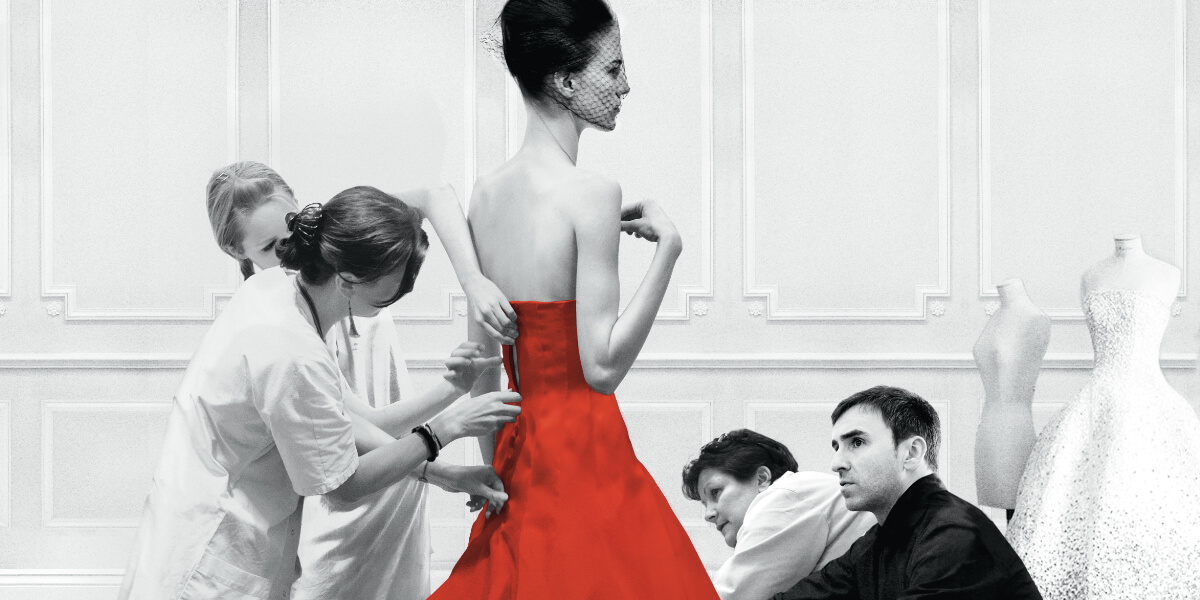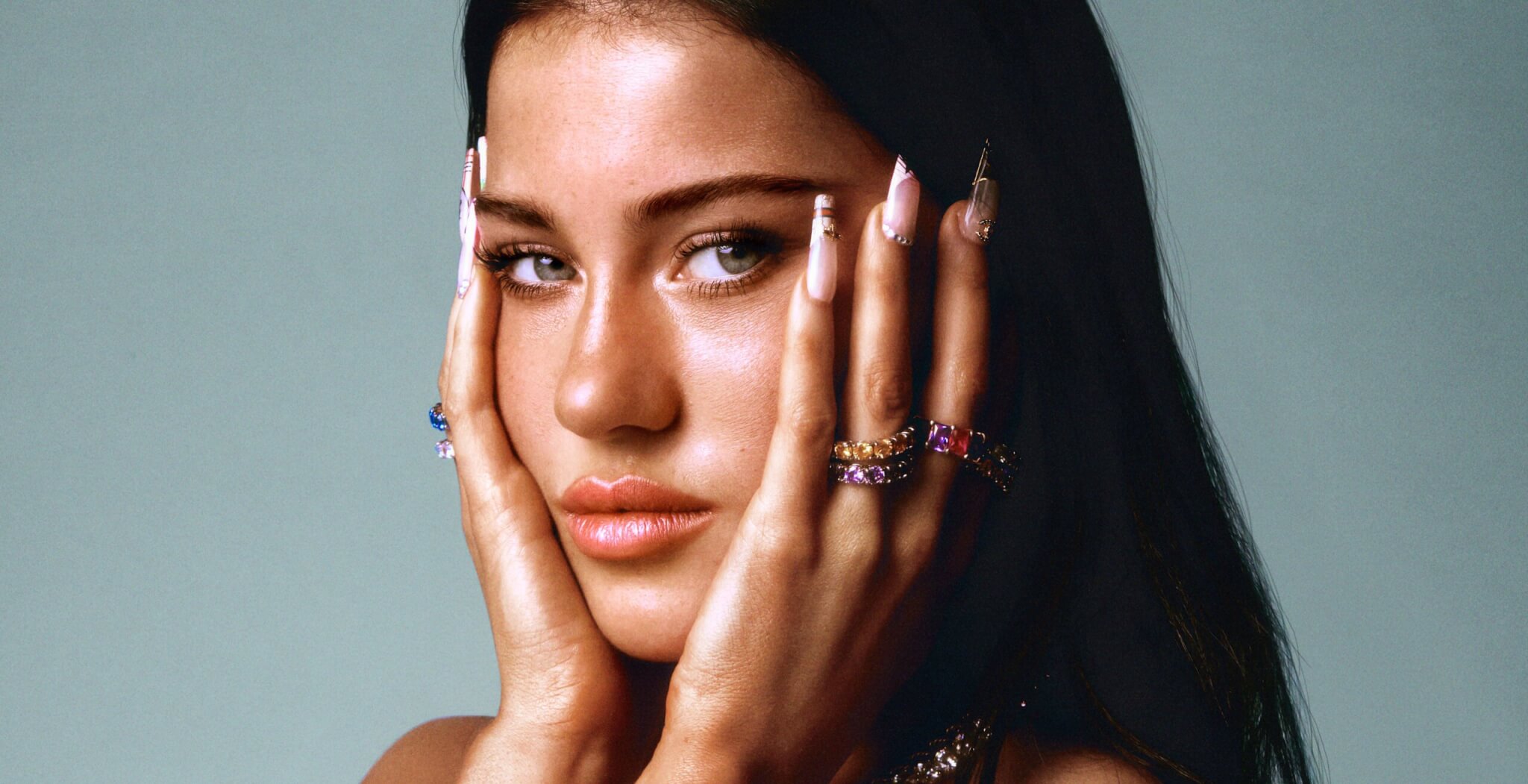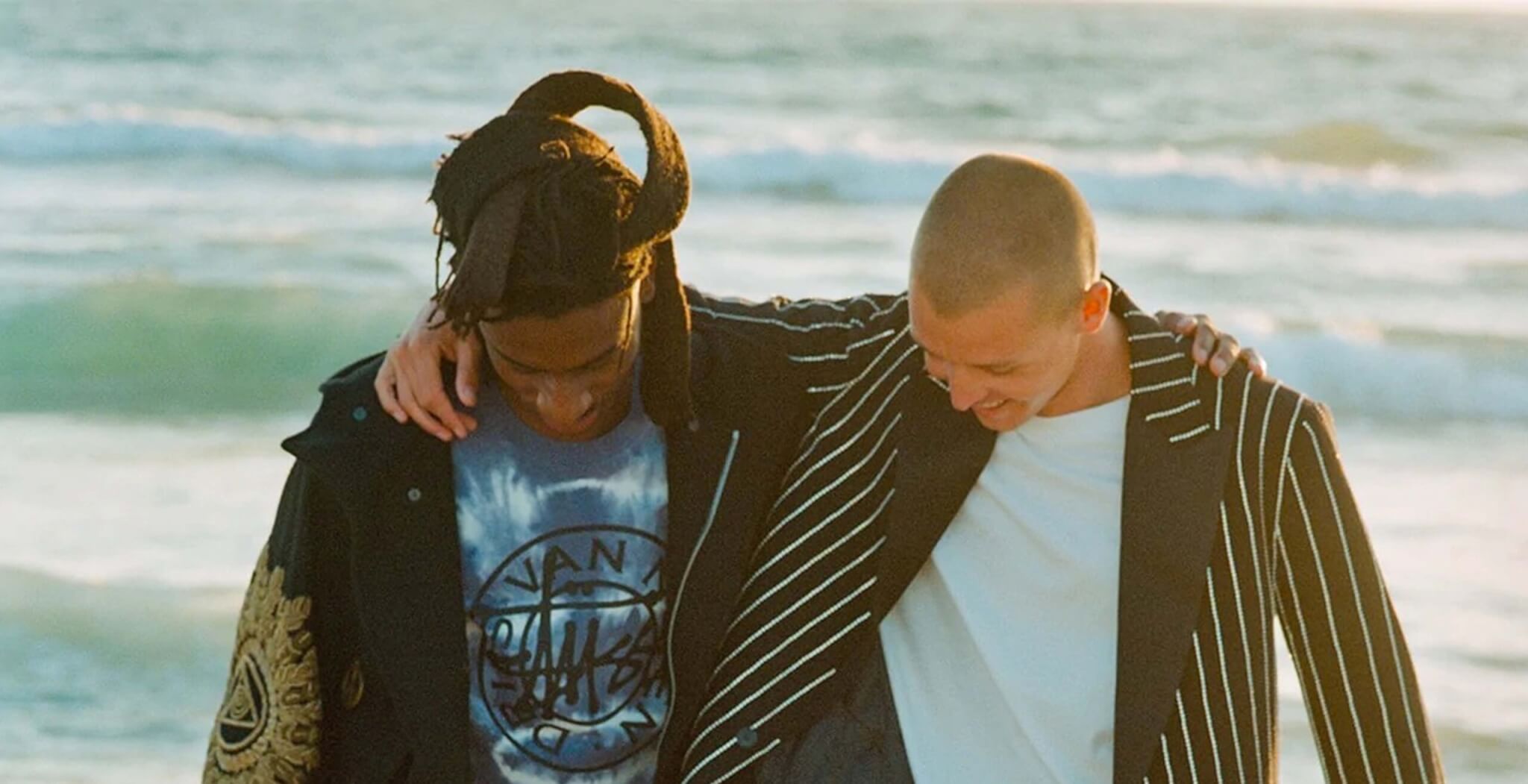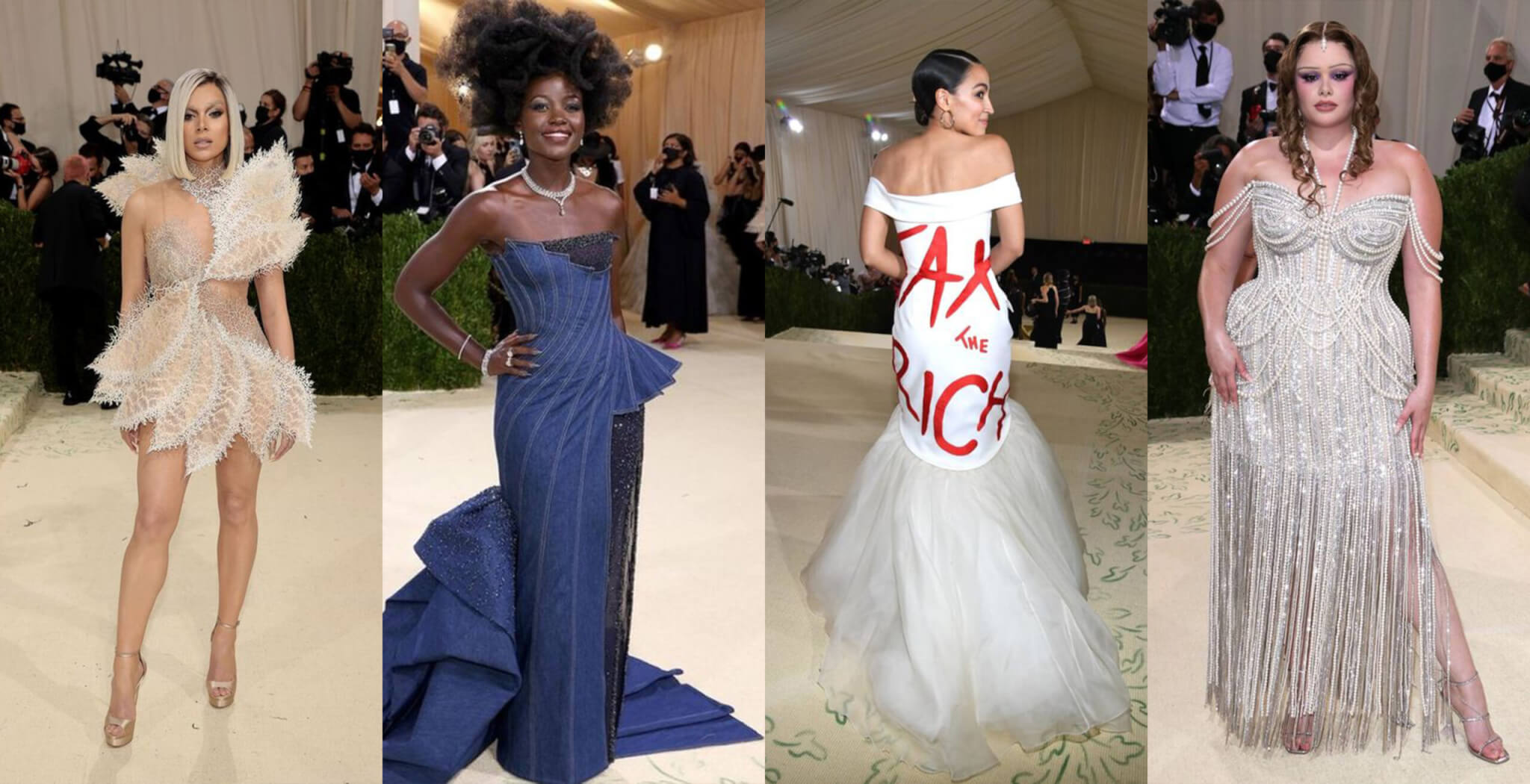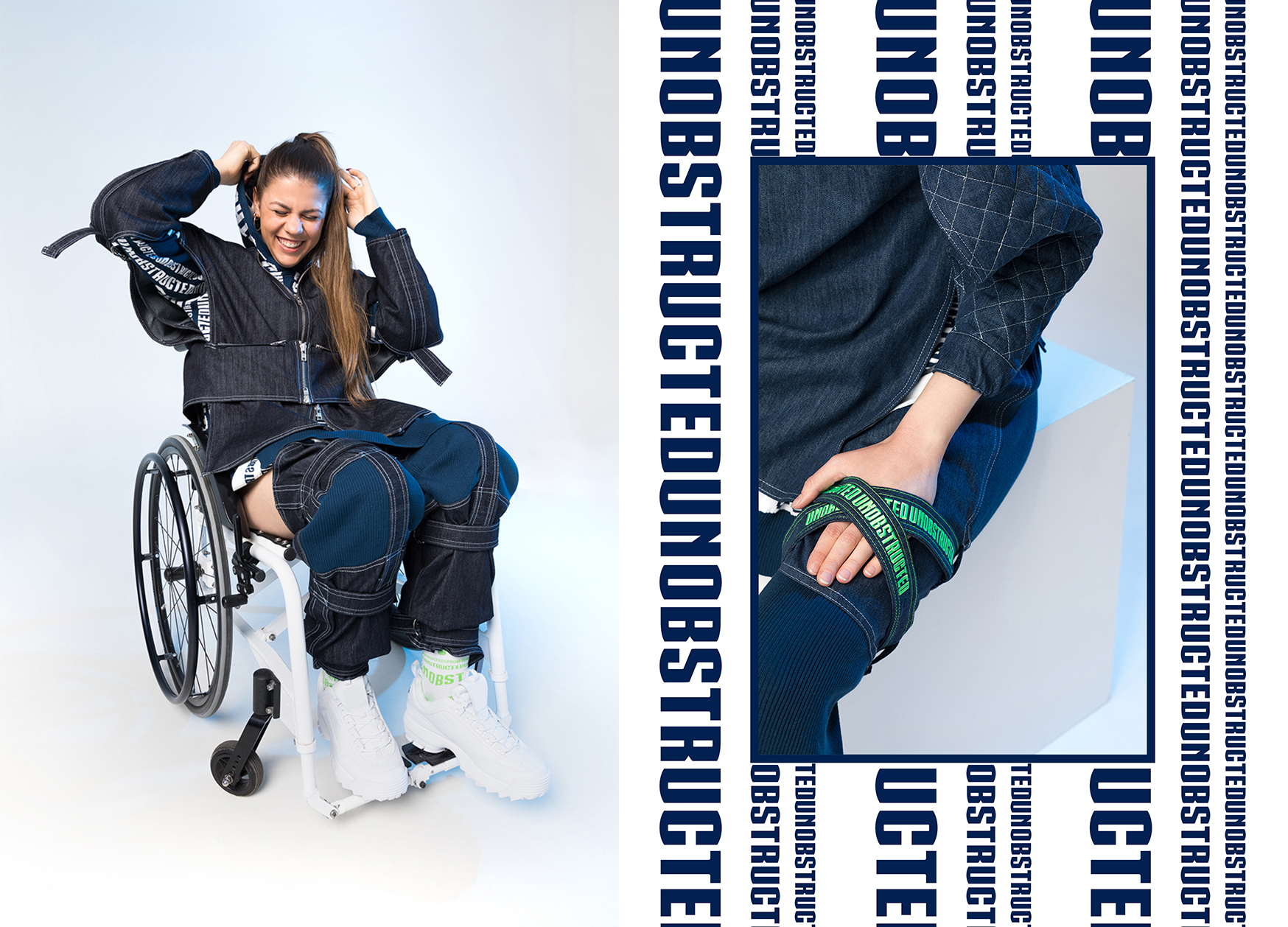There’s no doubt that fashion and film are inseparable. From costume design to collaborations between designers and directors, movie stars’ red carpet looks, The Devil Wears Prada, and Sex And The City. But what about the people behind the garments that grab our attention? For everyone interested in the behind-the-scenes of a runway show, the process of designing a new collection, or the thoughts and musings of some of the biggest designers in fashion history, here is a list compiled of films that will get you through the rainy summer days.
Notebook on Cities and Clothes by Wim Wenders
Both designer Yohji Yamamoto and director Wim Wenders are masters of their craft with a unique and thoughtful approach to what they do. Yamamoto has become synonymous with avant-garde fashion through his defiance of gender norms and the way he makes the colour black come alive through structure and form. Wenders has established himself as one of Germany’s leading directors, whose most recent film, Perfect Days, was the first work of a non-Japanese director to be nominated as a Japanese Oscar candidate. His reverence for Japanese culture strengthens the fabric of Notebook on Cities and Clothes, a documentary that revolves around a series of interviews between the director and Yamamoto. Going back and forth between Tokyo and Paris, the film investigates the similarities between the two artists’ crafts, as well as their relationship to the cities that inspire them.
Shot in 1988 and 1989 on 35mm, the film has a certain kind of graininess to it, which goes well with the rawness and quiet rebellion of Yamamoto’s first collections that pushed against the polished and at times superficial nature of Western style. His goal is to create clothing that people don’t just consume but live their lives with; something that becomes a part of them. One of Yamamoto’s biggest inspirations, a book with portraits from the 20th century, he says: “They’re not wearing clothes, they’re wearing reality.” As the two men talk about their motivations, their childhood, fame, and more, the film takes on a somewhat philosophical tone, which I personally enjoyed since it strongly emphasized the art of making clothes. Yamamoto himself emphasizes, “I’m not a fashion designer, I’m a dressmaker.” Together with his team, whom Wender calls “the guardian angels of an author”, Yamamoto puts together collection after collection, guiding the process just like a film director would. This juxtaposition of dressmaking and filmmaking, portrayed through Wenders’ signature techniques, is what makes Notes on Cities and Clothes stand out as a documentary.
Martin Margiela: In His Own Words by Reiner Holzemer
The ever-so-elusive designer behind luxury fashion house Maison Margiela finally tells his story, guiding us through twenty years of being head of the Maison with a soft, wry voice. All the while, he remains unseen. Sometimes his hands fiddle with a seam or work on a mannequin, which gives us the feeling of experiencing the world through Margiela’s eyes. Born and raised in Belgium, his interest in fashion formed early on. As a teenager, he began creating looks from secondhand clothes. In 1984, Margiela moved to Paris, where he worked as an apprentice for Jean Paul Gaultier until 1987. One year later, he founded his eponymous label together with business partner Jenny Meirens. Their eccentric and at times controversial shows quickly caught the fashion industry’s attention, constantly challenging people’s expectations and maintaining their deconstructed aesthetic to this day. “I knew I had a taste, but I didn’t know it was becoming a style”, Margiela says in the documentary.
A combination of interviews, archival footage, and Margiela’s narrative leads us to the point where he quit fashion in 2009 at the height of his success, citing the growing pressures of the internet age and the rise of the fast-fashion industry. Since then, Margiela has been pursuing his artistic career, exploring themes of illusion and transformation that expand on the ideas introduced in his fashion collections. Similar to Yamamoto, Margiela’s relationship to designing clothes goes much deeper than simply making something nice to wear, which is why I found this to be a very illuminating watch. Had there been more political reflection and contextualization, it would’ve rounded off the documentary perfectly.
Marc Jacobs & Louis Vuitton by Loïc Prigent
From 1997 until 2014, Marc Jacobs served as artistic director of Louis Vuitton, creating the maison’s first ever ready-to-wear collection. He developed special projects and collaborations with artists and designers such as Takashi Murakami, Yayoi Kusama, and Richard Prince, and translated the brand’s recognizable codes into a more modern, countercultural aesthetic, refreshing Louis Vuitton’s whole identity. Loïc Prigent was the first director who was able to follow the fashion designer through his chaotic and glamorous days. We accompany Jacobs in the back of a car, we’re backstage at fashion shows, photoshoots, and fittings, and we see him smoking cigarettes at all times.
It’s as a Letterboxd user writes: “Opening with Marc Jacobs attending a party in a pigeon costume really set the tone for the rest of the documentary.” It’s fast-paced, unfiltered, and humorous. Even though we can see the toll the fashion industry takes on people, it is evident that Marc Jacobs truly loves what he’s doing and the people he works with. While the documentary’s editing and score come with somewhat of a student film character that might not meet everyone’s taste, it underlines Jacob’s rather eccentric creation process, and the film isn’t afraid to poke fun at itself in an industry that sometimes takes itself a bit too seriously. To quote Marc Jacobs himself: “Is it so horrible that it’s good?”
Made in Milan by Martin Scorsese
The legendary filmmaker Martin Scorsese is known for his compelling storytelling and tackling themes such as power, morality, and the human condition in cult status movies like Taxi Driver, Goodfellas, and Casino. Giorgio Armani, who celebrated his 90th birthday last year, made a name for himself with timeless and elegant designs worn by Hollywood’s finest on the red carpet since the 1980s. The Italian label became famous for redefining the suit, which Armani comments on with: “I was the first to soften the image of men and harden the image of women. I dressed men in women’s fabrics, and stole from men what women wanted and needed: the power suit.”
Despite the fame surrounding Armani and Scorsese, the short documentary Made in Milan from 1990 has been overlooked for a long time. It’s just under thirty minutes long and shows Armani preparing for a show and discussing his ideas on fashion, family history, and his relationship to the city of Milan. He narrates: “The beauty of the city is in harmony with my style of work, my way of life, my way of seeing things. Milan has changed a lot since I first came here, but it hasn’t lost its atmosphere that can absorb and protect you while you work and play, in whatever way is best for you.” Armani’s and Scorsese’s relationship started out with them working on commercials for the label and later also collaborating on Goodfellas (1990) and The Wolf of Wallstreet (2013). They support each other in their respective fields to this day and share their passions. In a letter to his friend that was printed in Vanity Fair in 2015, Scorsese writes: “I look at Giorgio’s clothes, at his sense of balance and proportion, line and shape, color and texture, and I’m always astonished all over again. It doesn’t matter who’s wearing them – he makes us all look good.” This mutual appreciation is what gives the documentary depth and the ability to tell the story in a relatively short amount of time.
Dior and I by Frédéric Tcheng
Christian Dior played an essential role in re-introducing femininity to fashion in the late 1940s, contrasting the utilitarian style that had become popular during wartime. He introduced the so-called “new look,” which featured cinched waists and flowing skirts, promoting elegance and luxury. Even though he faced criticism for the style’s restrictive nature, his label managed to restore Paris as a global fashion capital and influenced beauty standards worldwide. After Dior’s sudden death in 1957, the house has seen a range of creative directors, from Yves Saint Laurent, Marc Bohan, to Gianfranco Ferré, John Galliano, and Raf Simons in 2012, which is where the documentary Dior and I takes place. The Haute Couture Fall 2012 collection was Simon’s first-ever couture collection and came together in only eight weeks, a stark contrast to the six to eight months it usually takes to undertake a project this big.
The documentary takes place during said eight weeks, chronicling the birth of the couture collection, Simon’s and his partner’s arrival at the atelier, and how they slowly grow familiar with the team that’s behind all the beautiful garments and, at times, grandiose ideas that the creative director comes up with. I particularly enjoyed all the footage and interviews with the seamstresses, some of whom had been working for Dior for the greater part of their lives. Even though there was a great sense of urgency and not everything went smoothly on the first try, the foundation of the maison is strong, and you can see how the team takes care of each other. Director Frédéric Tcheng captures all of these small moments and says in an interview with British Vogue that: “For me, the process of empathy is crucial when making a film. Emotionally, I was in a very similar place: excited, scared, overwhelmed. After two months, I felt like I had made that collection with them.”








